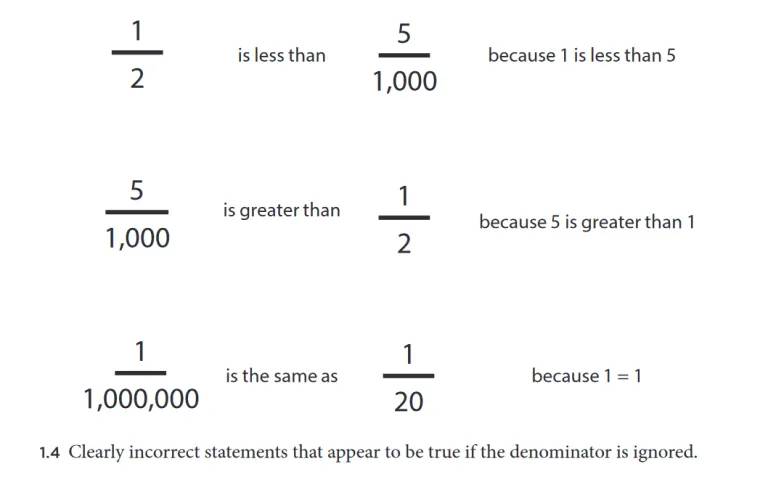
Austin Katz February 24, 2022
Reviewing ‘Partial Truths: How Fractions Distort Our Thinking’
Does Dungeons & Dragons really lead to an increase in teen suicides? How does the media affect our perception of the world? Do factually incorrect statements or our own perception of numbers betray us?
In his book Partial Truths: How Fractions Distort Our Thinking, experimental pathology professor James C. Zimring has assembled different methods in which numbers may lie to us, based on our own misperception of the actual statistics, to ways in which the media can distort the information it presents.

From publication biases to ignoring the numbers, there are numerous ways that we can misperceive statistics. Without correct information, fractions can be manipulated by miscommunication and faulty interpretations, so it’s up to us to not be lead astray. Take averages, for instance. Although we see averages as important, the numbers can be so diverse that there’s little way of telling a true population without the proper context. Factors of individual, societal, and technological levels can feed information which one may be inclined to believe, but may not actually be true.
Partial Truths is broken down into three parts. Part 1 describes the factors and circumstances which can lead to information misunderstanding; part 2 dives into contexts in which misunderstandings can affect reasoning (e.g. politics and COVID-19) and highlights the cognitive processes which cause the misunderstandings; and part 3 describes how we might be able to benefit from these mathematical errors and what we can learn to lessen them.
Zimring does a great job breaking down complex theories of statistics and mathematical equations into relatable stories and examples. His perception regarding the motivations which lead truth astray and how fractions can be manipulated to distort the truth is fascinating. Zimring puts forth that errors can enhance scientific understanding, which provides a perspective rarely seen in this line of writing.
Despite statistics, strong feelings can be more persuasive than hard data, making emotion overrule logic. For instance, the rate of death from car crashes is 750 times higher than flying. However, preexisting fears of flying may cause you to rethink your traveling methods and believe driving to be safer. You may even feel that shark attacks are highly likely after watching Jaws, despite the tiny chance that will actually occur.
The author’s use of classical cognition theories and its relation to modern issues ties Partial Truths together. Zimring shows that with the right understanding of statistics, almost anyone can become a “magician.” Drawing inferences from data might seem like magic if you don’t know the science behind it, but the proper understanding allows readers to see through the illusions.
Drawing inferences from data might seem like magic if you don’t know the science behind it.
Maybe the standout section of Partial Truths is Zimring’s examination of confirmation biases, like the tendency to seek and confirm information consistent with our beliefs despite evidence to the contrary. We tend to weigh confirmatory evidence more than contrary evidence, which can greatly affect our worldview based upon what we want to believe. At the heart of most controversies and conflicts is our own confirmatory tendencies. Zimring seeks to prove this theory by using fractions. Math should be a constant. The numbers are what they are, but are they?
Partial Truths: How Fractions Distort Our Thinking releases May 10, 2022.
Every February, to help celebrate Darwin Day, the Science section of AIPT cranks up the critical thinking for SKEPTICISM MONTH! Skepticism is an approach to evaluating claims that emphasizes evidence and applies the tools of science. All month we’ll be highlighting skepticism in pop culture, and skepticism *OF* pop culture.
AIPT Science is co-presented by AIPT and the New York City Skeptics.

Share this article today!
